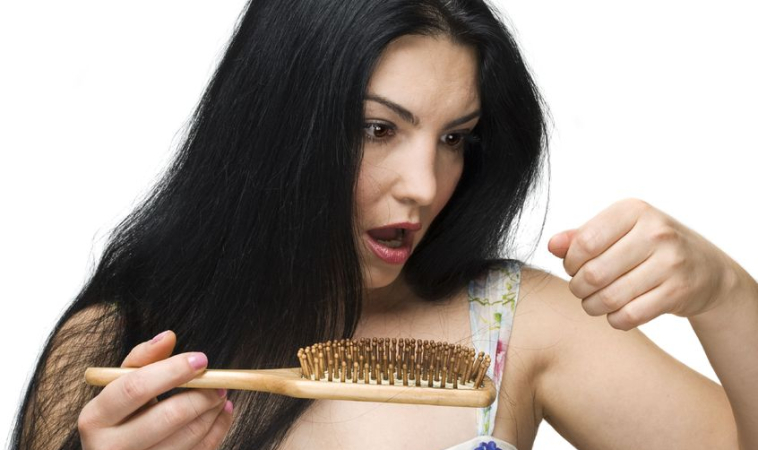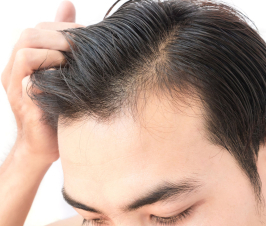1 in 3 women will experience significant hair loss at some point in their lives
For some of you, hair loss will be temporary, and occur for just a few months following childbirth or stress. For many of you, however, hair loss will be ongoing. You’ll see it in the mirror as your central part grows wider and wider. You’ll see it on your pillow as a pile of hair every morning.
You’ll meet with your doctor, and if you’re lucky, she’ll order blood tests to look for an underlying cause of your hair loss. She’ll screen for thyroid disease, polycystic ovarian syndrome, and autoimmune alopecia. If she finds something, your best treatment is to treat that condition.
Common Causes of Female Hair loss:
- Childbirth
- Illness
- Thyroid disease
- Iron deficiency
- Polycystic ovarian syndrome
- Hormonal contraception
- Chronic inflammation
But what if your doctor can’t find an obvious cause? What if your blood tests are all normal? Then your doctor will probably give you the very official-sounding diagnosis of androgenic (or androgenetic) alopecia or female pattern baldness.
“It’s genetic,” she’ll explain. “You can take this drug (spironolactone), or you can apply minoxidil (Rogaine). Neither treatment works very well, but you’ll have to take it for the rest of your life. If you stop, you hair loss will be worse than you ever had before.”
But wait. Let’s take a step back. It’s all too easy to call something “genetic” because we don’t have a better explanation. Certainly, genetic predisposition plays a role in hair loss (as it does in all health conditions), but genes are not the main cause of female hair loss. If they were, young women of previous generations would have suffered just as much hair loss as we do now. But hair loss was not common in the past. It’s very common now.
There are a couple of things going on.
2 Hidden Causes of Female Hair Loss
First of all, female hair loss is often the direct result of hormonal contraception. The worst types are the injection, implant, Nuvaring, and birth control pills such as Triphasil. Those methods contain progestins (synthetic progesterone) that are highly androgenic (testosterone-like), and can shrink or miniaturize hair follicles. Hair loss from androgenic progestins may take months (or even years) to become apparent, and even longer to reverse.
Female pattern hair loss can also be caused by chronic inflammation. According to a recent Cornell study,1 sufferers of androgenetic alopecia have higher markers of inflammation. Chronic inflammation is a kind of long-term immune activation that is caused by lifestyle factors such as bad diet, stress, and smoking. An anti-inflammatory diet and supplements are effective for reducing inflammation and for treating female hair loss.
Treatment Ideas
- Choose a different type of birth control that does not contain an androgenic progestin. Effective non-hormonal methods of contraception include Fertility Awareness Method, condoms, cervical cap, and the non-hormonal IUD. Speak to your healthcare provider.
- Work to promote a healthy ovulation and menstrual cycle, because that’s how you make estrogen and progesterone—the best hormones for hair.
- Eat fewer inflammatory foods such as deep fried foods and concentrated sugar.
- Identify food sensitivities such as wheat and dairy products, and avoid those foods. Food sensitivities contribute to inflammation and female hair loss.
- Eat more anti-inflammatory foods such as berries, spinach, and kale. The phytonutrients in brightly colored fruits and vegetables regulate immune function, reduce inflammation, and improve female hair loss.2
- Maintain healthy intestinal bacteria because they also work to reduce inflammation. Eat plenty of plant foods to feed bacteria, and also avoid antibiotics as much as possible.
- Ensure adequate intake of the mineral zinc, which is anti-inflammatory and essential for hair growth. Best food sources of zinc are red meat, poultry and shellfish. If your diet is inadequate, consider supplementing 15 – 20 mg zinc, taken directly after food.
- Ask your doctor for a blood test called “iron studies”. Your ferritin (iron stores) should be at least 50 ng/ML. Best food sources of zinc are red meat, eggs, and shellfish. If your diet is inadequate, consider supplementing 25 mg of a gentle iron, such as iron bisglycinate.
Tip: Be Patient
Even with perfect treatment, you cannot expect to see an improvement in your hair right away. Why? Because your hair roots are time capsules. Your hair today reflects the state of your health two to six months ago.
References:
1. Magro CM et al. The role of inflammation and immunity in the pathogenesis of androgenetic alopecia. J Drugs Dermatol. 2011 Dec;10(12):1404-11. PMID: 22134564
2. Le Floc’h et al. Effect of a nutritional supplement on hair loss in women. J Cosmet Dermatol. 2015 Mar;14(1):76-82. PMID: 25573272
 Lara Briden is a 1997 graduate of the Canadian College of Naturopathic Medicine in Toronto, Canada. She runs a busy hormone clinic in Sydney, Australia, and is the author of the book Period Repair Manual: Natural Treatment for Better Hormones and Better Periods.
Lara Briden is a 1997 graduate of the Canadian College of Naturopathic Medicine in Toronto, Canada. She runs a busy hormone clinic in Sydney, Australia, and is the author of the book Period Repair Manual: Natural Treatment for Better Hormones and Better Periods.
















